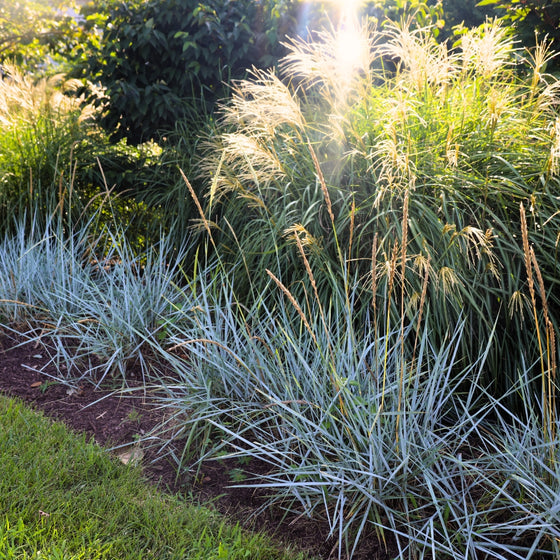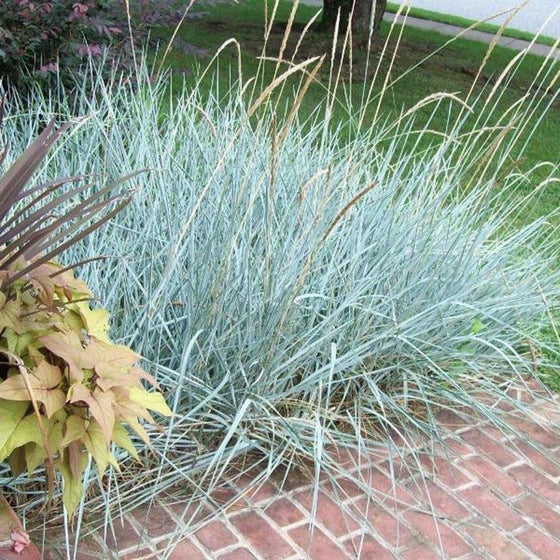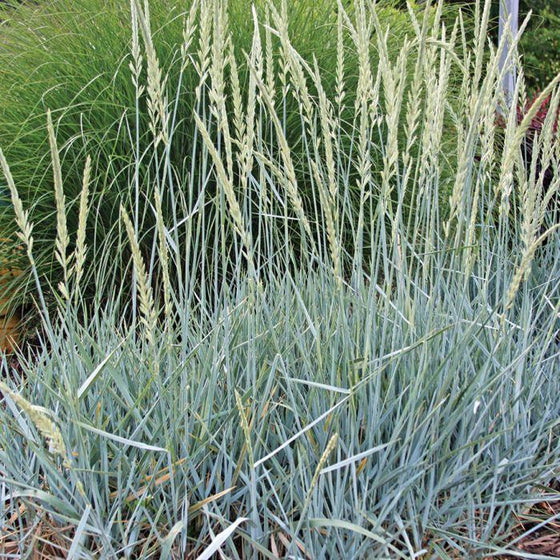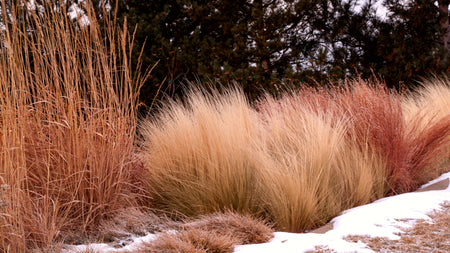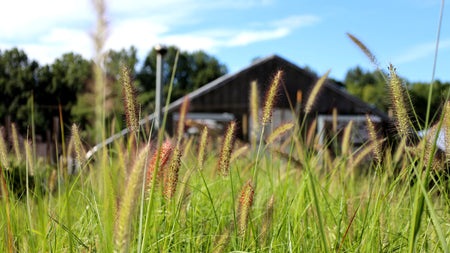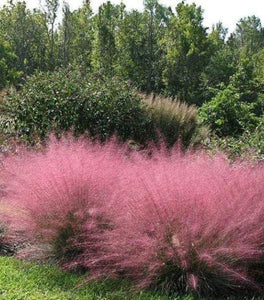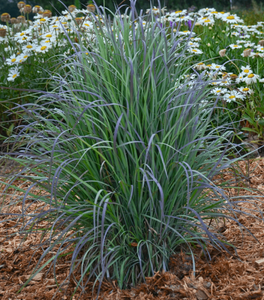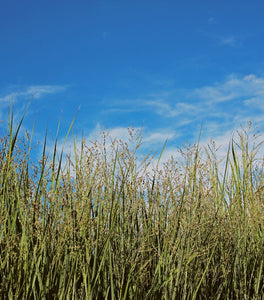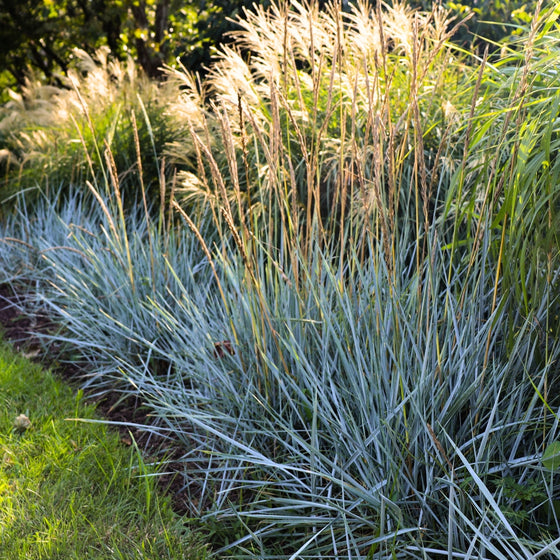
Images Depict Mature Plants
Blue Dune Lyme Grass for Sale Online
Blue Dune Lyme Grass (Leymus arenarius' Blue Dune') is a striking ornamental grass known for its silvery-blue foliage and robust growth. Perfect for adding texture and color to coastal and dry landscapes, this grass thrives in full sun and well-drained soils, making it an excellent choice for erosion control on sandy or rocky slopes. The bold blue-gray blades create a stunning contrast in the garden, and the grass produces wheat-like flower spikes in mid-summer, adding vertical interest. Blue Dune Lyme Grass is also highly salt-tolerant, making it ideal for seaside gardens or areas exposed to road salt.
This hardy grass grows well in USDA Hardiness Zones 4-9, withstanding a wide range of temperatures and weather conditions. Blue Dune Lyme Grass reaches a mature height of 24-36 inches and spreads up to 36 inches wide, making it an excellent option for mass plantings, borders, or as a ground cover in challenging environments. Its vigorous spreading habit allows it to establish quickly, filling in gaps and creating a dynamic, low-maintenance landscape. While it's known for its aggressive spread in some areas, it can be easily controlled with regular pruning or by planting in containers.
In addition to its eye-catching beauty, Blue Dune Lyme Grass is highly drought-tolerant once established, requiring little to no supplemental watering. This makes it a popular choice for xeriscaping and sustainable landscapes. Whether you're looking to stabilize sandy soil, create a low-water garden, or add striking color to your landscape, Blue Dune Lyme Grass is a versatile and resilient option that delivers year-round interest with minimal care.
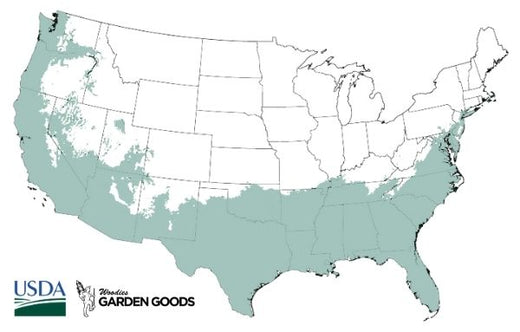
| Hardiness Zone: | 4-9 |
|---|---|
| Mature Height: | 2 to 2.5 Feet |
| Mature Width: | 2 to 3 Feet |
| Sunlight: | Full sun to part shade |
| Water Requirements: | Drought tolerant after established |
| Selling Points: | Deer Resistant, Soil Erosion Control |
How to Care for Blue Dune Lyme Grass
Before you buy a Blue Dune Lyme Grass, make sure to read about the care instructions that are required and recommended to keep this plant healthy and thriving.
How do I plant Blue Dune Lyme Grass?
To plant Blue Dune Lyme Grass (Leymus arenarius 'Blue Dune'), choose a location with full sun and well-drained soil to ensure optimal growth. This hardy ornamental grass thrives in sandy, rocky, or dry soils, making it perfect for coastal gardens or areas prone to erosion. Dig a hole twice the width of the root ball and slightly deeper than the container it comes in. Place the grass in the hole, ensuring that the top of the root ball is level with the surrounding soil. Backfill the hole with soil, gently firming it around the roots to eliminate air pockets. Water thoroughly after planting to help the grass settle in, but avoid waterlogged conditions. When planting Blue Dune Lyme Grass in your landscape, allow enough space for its spreading habit—about 2-3 feet between plants for mass plantings or ground cover. It’s a great choice for stabilizing slopes or sandy areas, as it establishes quickly and controls erosion. For container plantings, use a pot with drainage holes and a well-draining potting mix to prevent soggy roots. Once established, this grass requires little maintenance and is highly drought-tolerant, making it an ideal low-water option for both formal and naturalized gardens.
How do I water Blue Dune Lyme Grass?
Watering Blue Dune Lyme Grass (Leymus arenarius 'Blue Dune') is straightforward, especially once the plant is established. During the first growing season, it's essential to water regularly, keeping the soil consistently moist but not waterlogged. Deep, infrequent watering encourages a strong root system, which will help the grass become more drought-tolerant over time. Aim to water the grass about once a week, depending on rainfall, ensuring that the water penetrates deeply into the soil. Be careful to avoid soggy conditions, as Blue Dune Lyme Grass prefers well-drained soil and can suffer from root rot in overly wet environments. Once Blue Dune Lyme Grass is established, it requires minimal watering and thrives in dry, sandy, or rocky soils. In fact, it is highly drought-tolerant, making it a perfect choice for low-water landscapes and coastal gardens. During prolonged dry spells or extreme heat, an occasional deep watering can help maintain its vibrant blue-gray foliage. However, overwatering should be avoided, as this grass is naturally adapted to withstand dry conditions. Its resilience to drought makes it a great low-maintenance option for xeriscaping and erosion control projects.
How Do I Fertilize Blue Dune Lyme Grass?
Fertilizing Blue Dune Lyme Grass (Leymus arenarius 'Blue Dune') is minimal, as this hardy ornamental grass thrives in poor, sandy soils where many other plants struggle. To encourage healthy growth and maintain its striking blue-gray foliage, a light application of a balanced, slow-release fertilizer in early spring can be beneficial. Choose a fertilizer with equal parts nitrogen, phosphorus, and potassium (such as 10-10-10) to provide essential nutrients without encouraging excessive growth. Be careful not to over-fertilize, as this grass is adapted to low-nutrient environments and too much fertilizer can lead to leggy, weak growth. Once Blue Dune Lyme Grass is established, it typically requires little to no additional fertilization. However, if planted in extremely poor soils or if growth appears stunted, you can apply a small amount of compost or a low-nitrogen fertilizer in mid-summer to give the grass a gentle nutrient boost. Avoid high-nitrogen fertilizers, which can promote overly lush, floppy growth that detracts from the plant's natural upright form. By keeping fertilization light and infrequent, you allow Blue Dune Lyme Grass to thrive in its natural conditions, contributing to a low-maintenance and sustainable landscape.

How do I prune my Blue Dune Lyme Grass?
Pruning Blue Dune Lyme Grass (Leymus arenarius 'Blue Dune') is essential for maintaining its attractive appearance and encouraging healthy growth. The best time to prune this ornamental grass is in late winter or early spring before new growth begins. Using sharp garden shears, cut back the dead foliage to about 3-6 inches above the ground. This helps remove old, brown blades and makes way for fresh, blue-gray growth to emerge. Pruning at the right time not only keeps the plant looking tidy but also prevents the buildup of dead plant material that can harbor pests or diseases. Throughout the growing season, Blue Dune Lyme Grass typically requires minimal pruning. However, you can trim any damaged or unruly blades to maintain its neat, clumping habit. Avoid heavy pruning during the summer months, as this can stress the plant and disrupt its growth. Since Blue Dune Lyme Grass is a vigorous spreader, you can also divide and thin the grass every 2-3 years to manage its spread and rejuvenate older plants. Regular pruning and maintenance help keep this hardy grass looking its best while preserving its structural beauty in the landscape.

